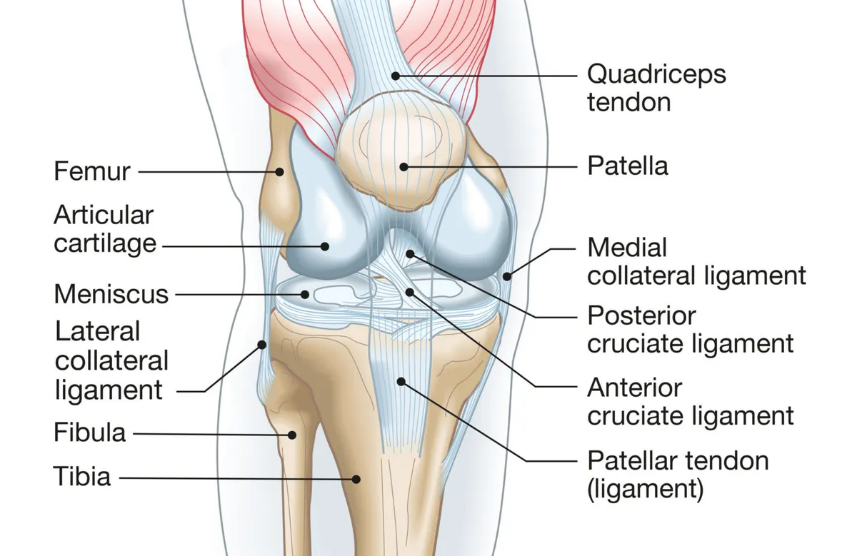The Ins and Outs of Knee Scope Anatomy: What You Need to Know
If you're preparing for knee surgery, it's important to understand the anatomy of the knee. This guide provides a comprehensive overview of knee scope anatomy.
Knowing the anatomy of the knee can make you feel more prepared for what can be a frightening procedure. The bones, ligaments, tendons, and cartilage of the knee are discussed in detail in this manual, along with how they function and how knee scope surgery affects them.
Understanding the Knee Joint
The femur (thigh bone), tibia (shin bone), and Patella (kneecap) can all move within the complicated joint that is the knee. It is the body's biggest joint and essential for weight-bearing actions including running, jumping, and walking.
Articular cartilage, a smooth, shiny substance that covers the extremities of the femur and tibia bones, assists in cushioning the bones and absorbing shock while the body moves. On the underside of the patella, there is a thin layer of cartilage that enables the patella to move easily over the outside of the knee joint.
The anterior cruciate ligament (ACL), posterior cruciate ligament (PCL), medial collateral ligament (MCL), and lateral collateral ligament (LCL) all work together to hold the knee joint together. These ligaments aid in stabilizing the knee and limit excessive motion in all directions.
The quadriceps, hamstring, and patellar tendons are only a few of the muscles and tendons that support the knee joint in addition to the ligaments. Together, these components give the knee joint strength and stability.
The knee joint is susceptible to damage and aging over time even though it has a complicated structure. Meniscus tears, patellar dislocations, and ligament sprains and rips are common knee ailments. Over time, conditions like osteoarthritis can cause the knee joint to degenerate, resulting in discomfort and restricted movement.

The Role of the Meniscus
A patch of cartilage in the knee joint called the meniscus acts as padding between the thigh bone (femur) and the shinbone. (tibia). There are two menisci in each knee, one on the lateral and one on the medial side. The meniscus stabilizes the joint, absorbing shock, and aids in the even distribution of weight across it.
Turning or twisting the knee, particularly with the foot fixed and the knee bent, can harm the meniscus. Meniscus tears are more common in athletes who participate in sports like basketball and soccer, which call for quick pauses and changes of direction. Due to the deterioration of the cartilage with age, older people are also susceptible to meniscus tears.
A torn meniscus can result in knee discomfort, stiffness, edema, and a restricted range of motion. A torn meniscus may occasionally cause knee freezing or catching, which makes it challenging to bend or straighten the knee.
The Importance of the ACL and PCL
The knee joint is home to two important ligaments called the anterior cruciate ligament (ACL) and posterior cruciate ligament (PCL). When performing actions like sprinting, jumping, and rotating, these ligaments hold the knee joint steady and under control.
The ACL joins the thighbone to the shinbone and is situated in the middle of the knee. Its main purpose is to limit the tibia's forward displacement with respect to the femur. On the other hand, the PCL joins the thighbone to the shinbone and is situated in the back of the knee. Its main purpose is to limit how far the tibia can go backward in reference to the femur.
The ACL and PCL cooperate to maintain the stability of the knee joint during motion. Injuries to any or both ligaments can cause instability in the knee joint, which can cause discomfort, swelling, and trouble walking.
Injuries to the ACL and PCL are frequently brought on by sports-related activities including abrupt halts or changes in direction. Trauma, such as a vehicle accident or a fall, can also cause these injuries.
The Function of the Patella
A little bone in the outermost part of the knee joint is called the patella, also referred to as the kneecap. It is incorporated into the quadriceps muscle's tendon, which oversees extending the knee.
The patella's main job is to improve the quadriceps muscle's leverage so that more force can be generated when the knee joint is extended. Additionally, it serves as a cushion for the knee joint, reducing impact and evenly dispersing pressures.
The quadriceps tendon is also guided by the patella, guaranteeing appropriate alignment, and lowering the chance of damage or injury to the tendon.
The patella is an essential part of the knee joint and is critical to how it works. However, if not properly cared for, it can also be injured and become a cause of pain and suffering.

